Mildew is a white or black blotch of growth created by molds, which are plant growths that thrive mostly in humid, damp environments mostly found in homes (in the walls, basements, and crawl spaces). Mildew can make many people sick by causing allergies and respiratory problems. Mildew can also reside in the body when inhaled and can eventually attack the skin, causing or aggravating skin conditions like eczema, extreme skin dryness, blisters, and blotchy red marks.
Rid skin mildew by first attacking the source. Mildew thrives in humid, damp environments, so it is important to eradicate all moisture areas in your home or office that breed mold spores. Have your home checked for possible insulation problems and make sure that the outside drainage is adequate so as not to create water leaks in walls. Proper ventilation is also essential to remove humidity. Heating the home and using exhaust fans can also drive out mildew.
Protect your skin from mildew by getting rid of musty, dank odors that reside in cleaning areas like kitchen fixtures and the bathroom. The bathroom especially can harbor hundreds of mold spores that cause mildew to attach itself to your skin. Showers and sinks should be thoroughly cleaned with a household cleaning agent, along with baking soda and diluted bleach.
Draw out wet shower curtains so that they may dry properly and so that they do not stick together. Shower curtains harbor the most mold during bath or shower time from left over dirt and skin residue. Cut down on mildew and mold by replacing the shower curtains every six to eight months. Properly clean shower curtains with ammonia and diluted bleach.
Garments and clothing should be cleaned frequently to reduce skin mildew. Dry clothing thoroughly after washing and never let damp garments hang around the house for too long. Damp wash clothes and towels need to be hung to dry before they are placed in hamper so as not to create mildew.
Pay attention to upholstered furnishing in the home that your skin is exposed to. This also included mattresses, rugs, and carpets where mold resides. Vacuuming daily can strip moisture out of these upholstered furnishings and fungicide sprays can be used for mattresses and rugs.
Use anti-fungal sprays on your garments and upholstery so that mildew will not attach itself to your skin. Disperse paradichlorobenzene crystals, which will kill mold and mildew, through the folds of garments and in garment bags so the heavy vapors settle on the materials being protected. Clean clothing thoroughly before storing long periods of time and pack clothing in airtight bins that will keep moisture out.
If mildew on your skin from any of these sources causes skin irritation, investi in appropriate skin creams that will alleviate these conditions. Your dermatologist will be able to diagnosis the skin problem and help find ways to treat mildew skin-related problems.
Related Articles

Purpose of Moth Balls

How to: Eucalyptus Oil as a Flea ...
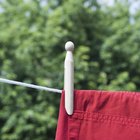
Removing White Fuzzy Mold From Dark ...

How to Remove a Mold Stain From a Ski ...
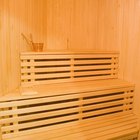
Sauna Cleaning Requirements

How to Prevent Fabric Dry Rot

Why Do White Clothes Turn Yellow in ...

How to Get Rid of Mold in a Gym Bag

Treatment for Tent Mold & Mildew
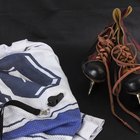
Homemade Solution for Killing Bacteria ...

List of Biodegradable, Every Day ...

Why Should You Use Filtered Water in a ...

How to Store Clothes in Storage

Does Baking Soda Need to Be ...

What Chemicals in a Swimming Pool Turns ...
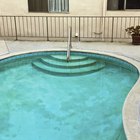
Swimming Pool Algae Problems

How to Remove Cigarette Smoke Stains

How to Care for Moleskin Fabric & Suede ...

How to Get Mildew Smell Out of Handbags
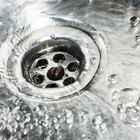
What Are the Benefits of Water ...